Developing Dice Miner's Mountain
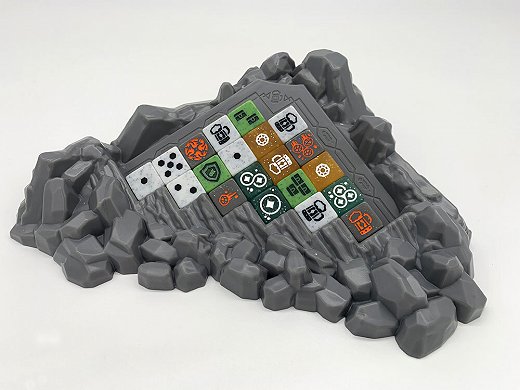
The Challenge
The
mountain in the photo of Joshus DeBonis and Nikola Risteski’s pitch
sheet for Dice Miner was what really got my attention. If you were
a backer of our Dice Miner Kickstarter campaign, or if you picked
it up in a store, there’s a strong possibility that it’s what got
your attention, too.
Here’s how Dice Miner looked when Josh and Niko first sent it over, a
printed mountain taped to the back side of a mountain glued together
from about 15 individual clear acrylic pieces.
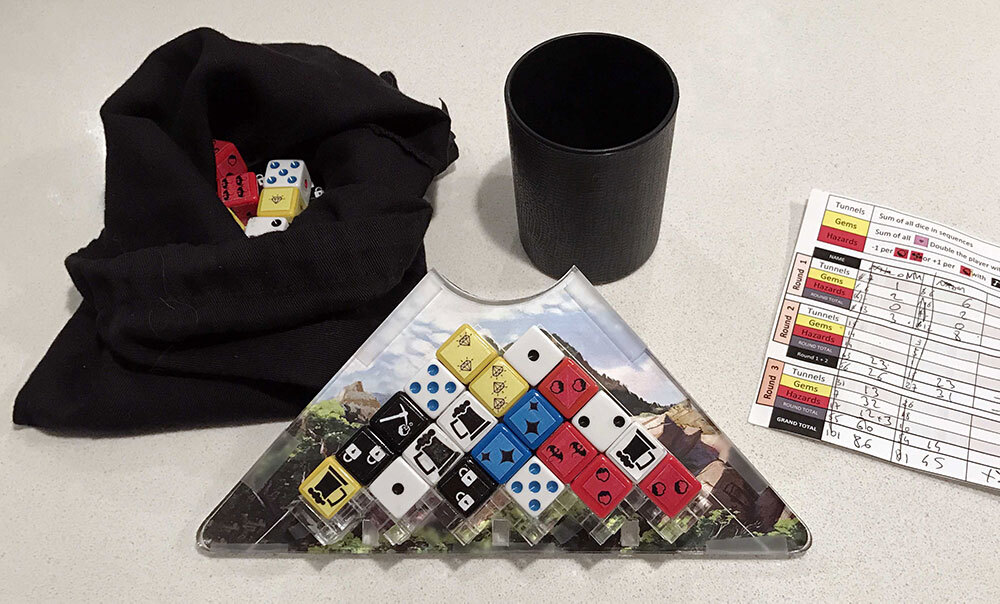
If
your first thought when you saw Dice Miner was like mine, your
second thought was probably not at all like my second thought, back
when I was looking at that pitch sheet. My second thought was: “How
the heck are we going to mass-produce that?!”
The
problem with building the Dice Miner mountain isn’t with
technology. The tech definitely exists to make three dimensional
objects out of acrylic, plastic, punchboard, wood, or a million other
materials.
The
twin questions with a unique game component always revolve around reliability and expense. Reliability, in terms of the mountain’s
ability to do its job, game after game. Can it collect and hold dice
in the right configuration for dozens or hundreds of plays over the
course of its lifetime, through shipping, setup, and storage, in
situations where it will not necessarily be treated with any kind of
delicacy? And expense, in terms of what thousands of game-players
will be not just willing, but excited, to pay for a game of Dice Miner’s level of complexity?
Getting Help
As
the project’s producer, I had ideas about our targets for
reliability and expense, but not a deep enough expertise to be
confident. I put out a call for folks who could help, and was
reminded that my former Fantasy Flight Games co-worker Jason Beaudoin
was doing freelance consulting in the area. Jason’s 3D and
production chops go back to the work we both did on FFG’s edition
of Horus Heresy in 2009, when he was the creative and production
mind behind that game’s printed, vacuformed board elements.
Long
story short, Jason was crucial to making Dice Miner’s mountain
work. I had all but abandoned the idea of creating a viable
punchboard mountain, but he wasn’t so sure. After our first
meeting, he returned four different mountain ideas.
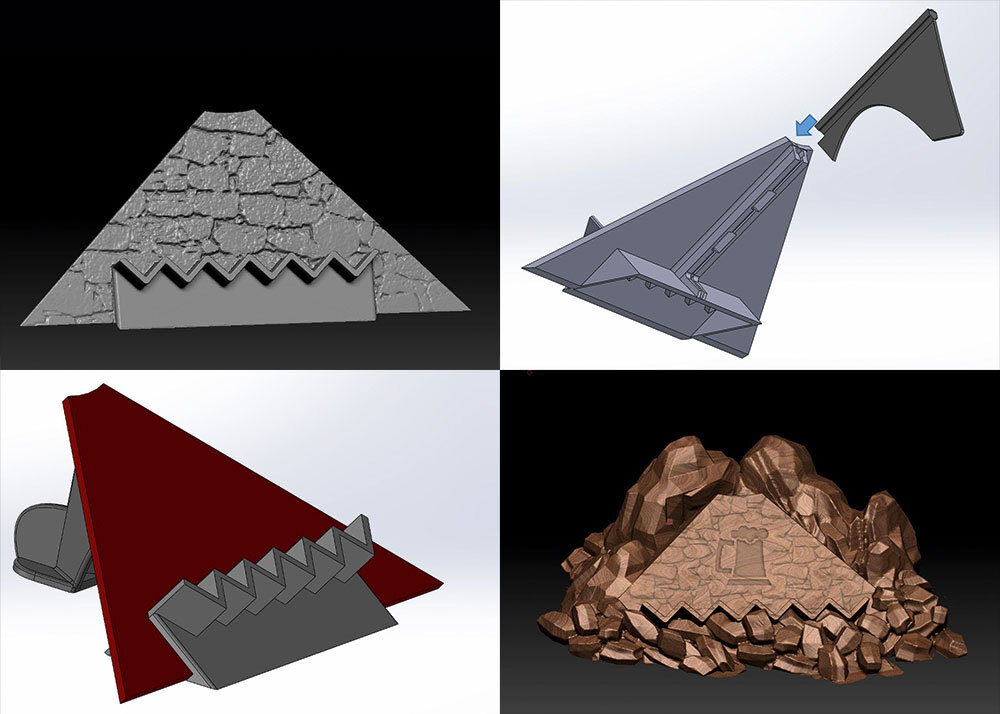
Deciding
Between
regular paper printers, spare cardboard, X-Acto knives, and a 3D
printing service, we had prototypes made and we played Dice Miner
on them. We distributed them to our likely factory partners and got
quotes. I ran budget scenarios. We talked about what looked cool,
what could be printed, and which production partners we felt like we
could trust to actually produce what they were proposing.
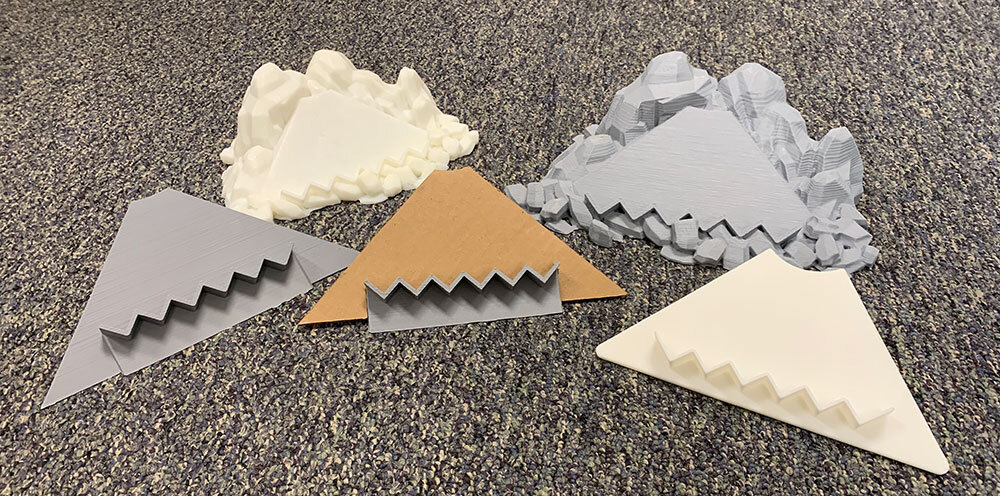
We
knew we’d be Kickstarting Dice Miner, and our previous campaign’s
backer dynamics played into the picture. We know that backers
appreciate the chance to choose between standard and deluxe backing
options, which led us to a “Why not both?” answer to the
punchboard-or-plastic question: Punchboard for the Standard Edition,
plastic for the Deluxe.
My
budgets suggested that this would be viable for both conservative and
optimistic backer projections, and further, that we wouldn’t be
accidentally doomed by the outside success we did eventually achieve.
(Sometimes, a great game at Kickstarter can lead to a production
configuration where later reprints aimed at the regular distribution
channel are financially impossible. These can be good problems, but
they can also be destructive ones.)
Dice Miner Reaches Gamers!
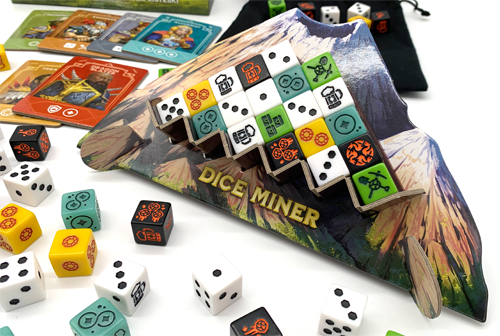
With
Dice Miner now reaching backers, we’ve received overwhelming
positive response to the game’s mountain component. And it’s been
nice to hear from backers who like both editions, which suggests that
offering both punchboard and plastic options has, in fact, served
more gamers than one or the other alone would have done.
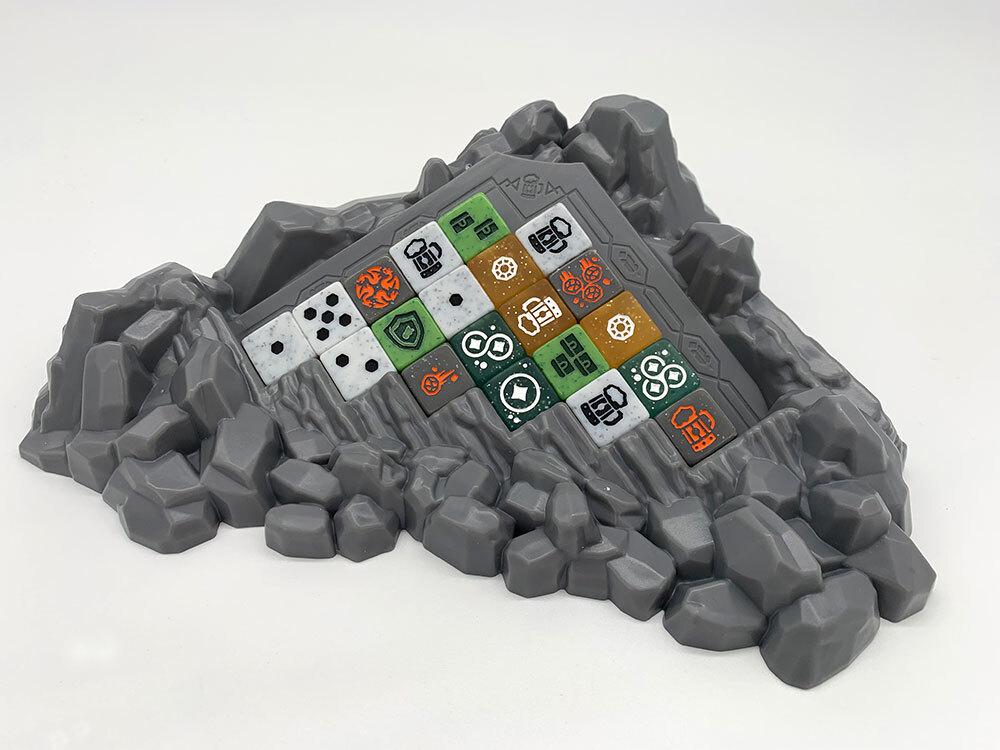
Both Dice Miner Standard Edition and Dice Miner Deluxe Edition are available for order now! We look forward to hearing what you think.
-Jeff Tidball, Dice Miner Producer
